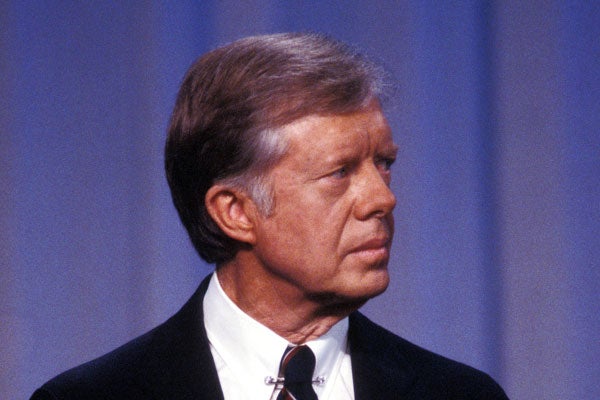Echoes of 1980
Rich Tucker /
For those old enough to remember 1980, the current campaign can seem mighty familiar. Back then, for example, the presidency of Jimmy Carter was besieged by an ongoing recession and soaring energy costs.
Carter’s reaction was to retreat to Camp David for 10 days of talks with political leaders and average Americans. The result was the famous “malaise” speech. Carter never used that word, but it certainly expressed his tone. Carter seemed to suggest that the American Dream was in trouble:
The symptoms of this crisis of the American spirit are all around us. For the first time in the history of our country a majority of our people believe that the next five years will be worse than the past five years. Two-thirds of our people do not even vote. The productivity of American workers is actually dropping, and the willingness of Americans to save for the future has fallen below that of all other people in the Western world.
Carter prescribed more federal spending and regulation to heal the American spirit. Ronald Reagan opted, instead, for an opportunity agenda. His optimistic approach proved it was still “morning in America.”
Today, we’re again being warned that the American Dream is a thing of the past.
“It’s time to retire the American Dream—or at least give it a long vacation,” Washington Post columnist Robert Samuelson wrote recently. “The American Dream has become so expansive in its meaning that it stifles honest debate and harms some of the very people it is intended to help.”
He’s certainly correct that the phrase is being overused—if only because politicians on the left are eager to use it to promote their agenda. But rather than simply drop the concept, it would be better for politicians to rededicate themselves to protecting and expanding opportunity and prosperity.
“The real American Dream is first and foremost about hard work and the opportunities created by a free economy,” write David Azerrad and Rea Hederman in a Heritage Special Report. “Stemming from our founding principles, it can be summed up by a simple equation: Economic Freedom + Culture of Work = Prosperity and Opportunity.”
As in the Carter years, today’s biggest threats to the American Dream come from misguided federal policies. Back then it was price controls. Now, the “exhortation to work hard and persevere if you fail has given way to calls for greater government involvement to ensure that everyone rises in the first place,” Azerrad and Hederman write. The left’s new American Dream “is first and foremost about all that the federal government must do to create opportunity and ensure that incomes are distributed more equitably. Individual effort takes a backseat to government spending and cradle-to-grave entitlements.”
And as in 1980, there’s a lot at stake.
“For the Left’s new American Dream to deliver on its promise, America would have to be completely overhauled and the character of its citizens altered,” Azerrad and Hederman write. “The spirited, entrepreneurial and determinedly self-reliant citizens envisioned by the Founders of our constitutional republic would give way to timid and envious clients who increasingly turn to an omnipotent state for their well-being. It is therefore imperative that the American Dream be rescued from those who would so radically redefine it.”
In other words, it time to focus on saving the American Dream, not extinguishing it.

